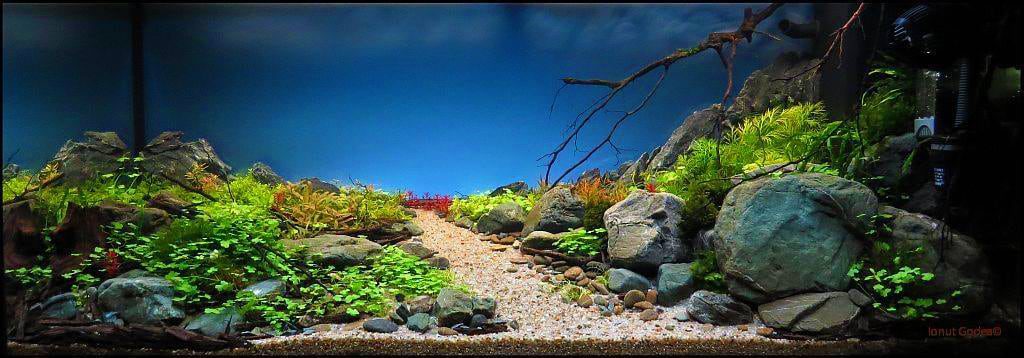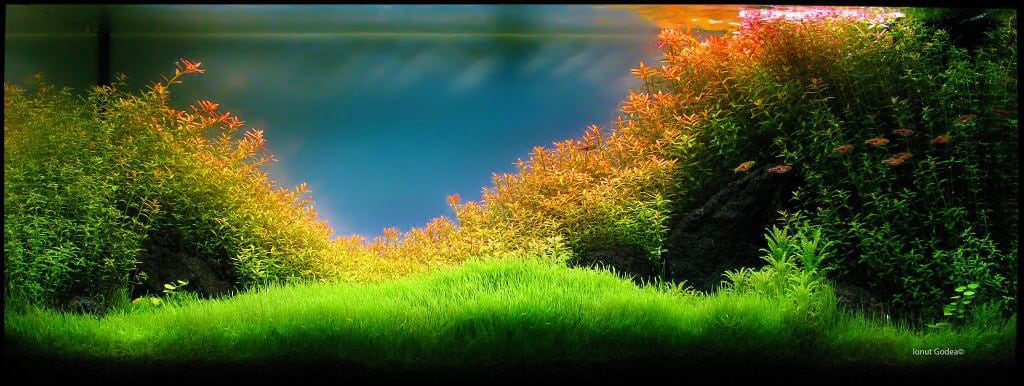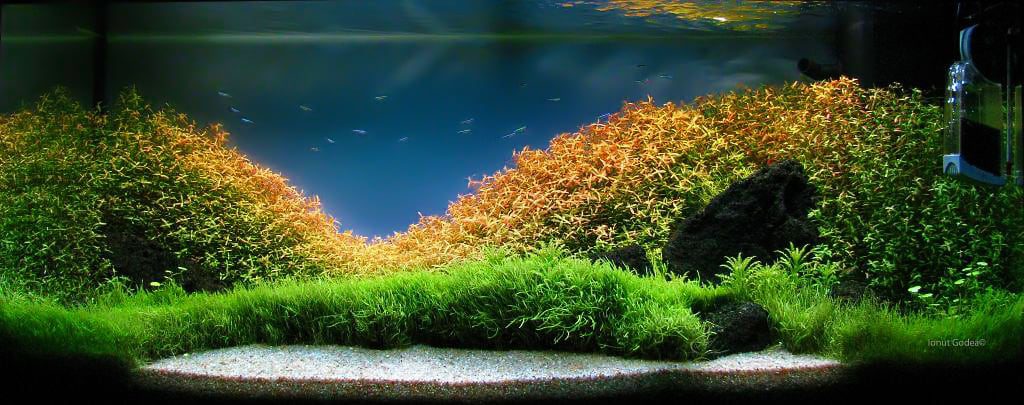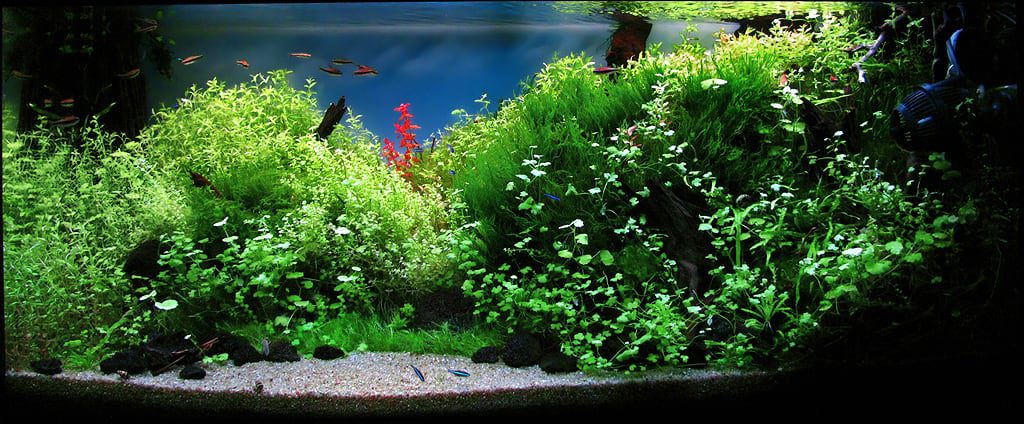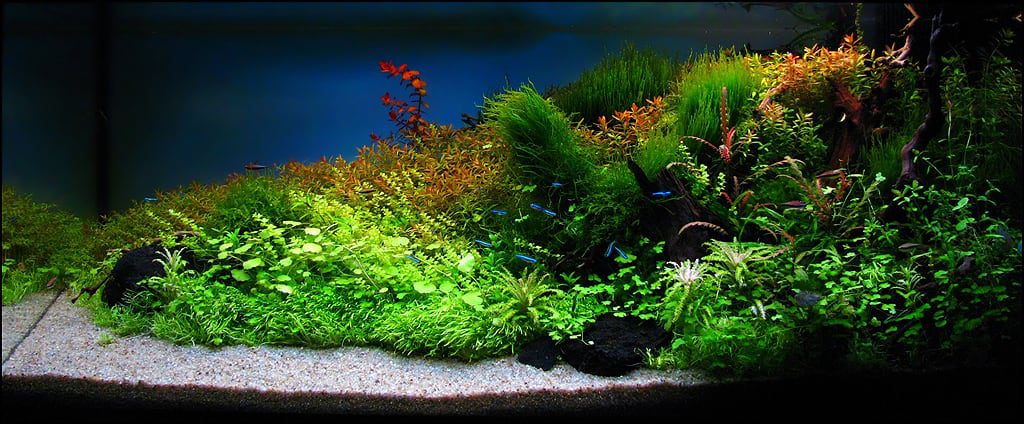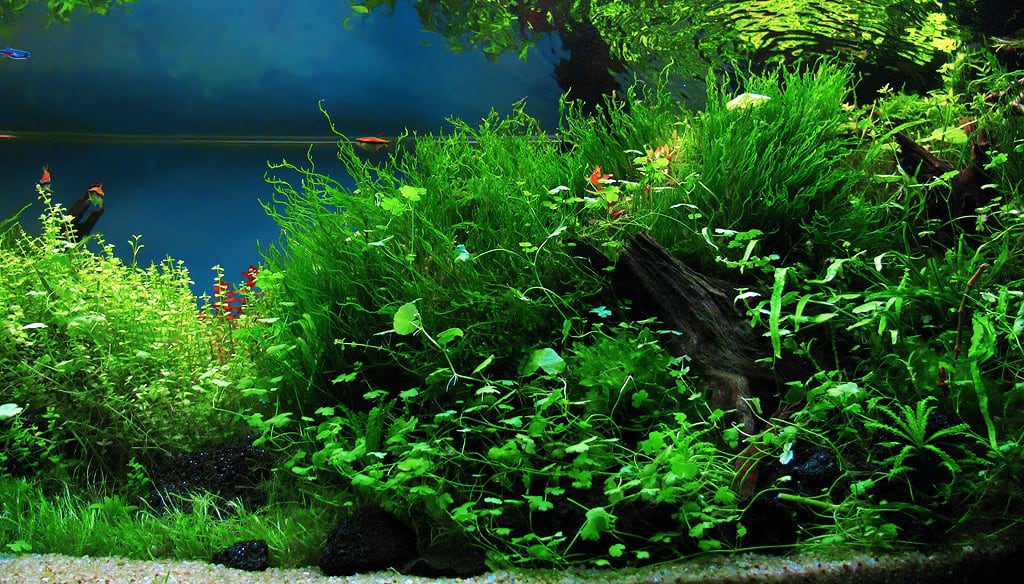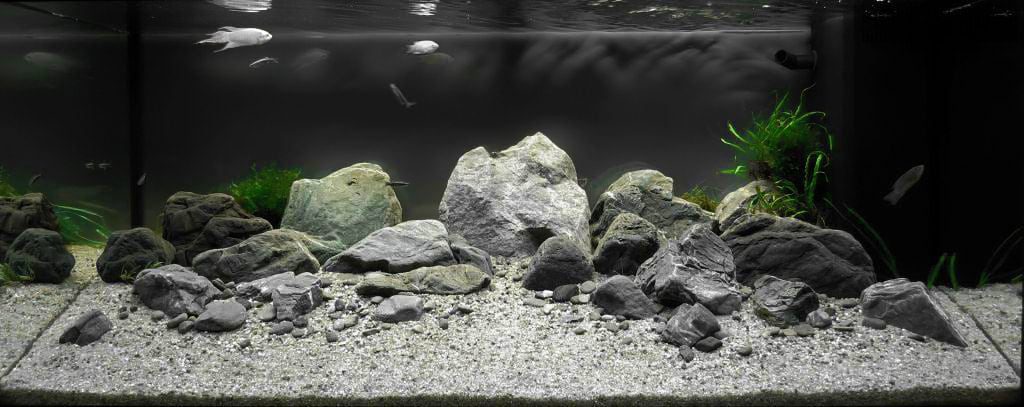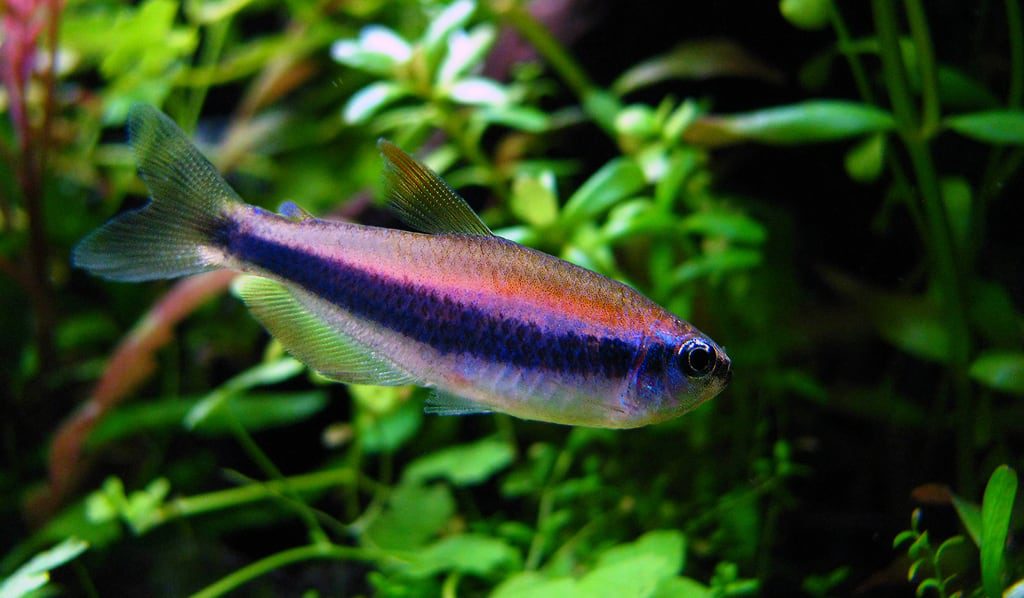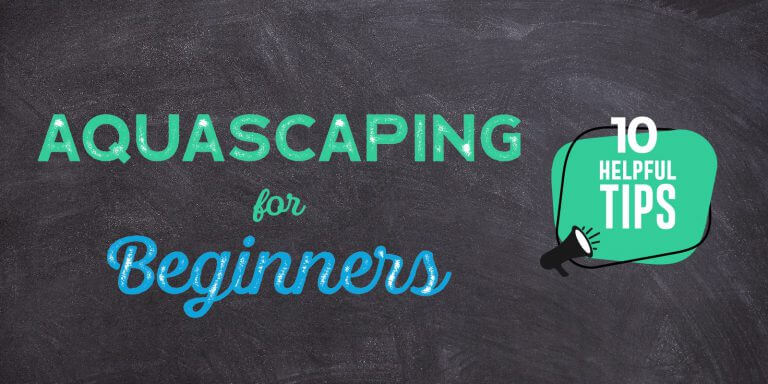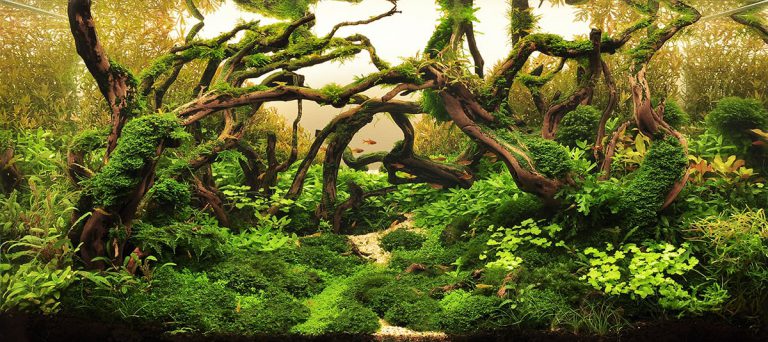Our aquascaping interview series continues with Ionut Godea, a young and promising aquascaper from Romania, all the way in Eastern Europe.
1. Hi Ionut, Welcome to our Aquascaping Interview series. To start of, can you tell us a little about yourself?
I’m a simple man who wishes to give to others a small piece of my soul by creating these nature-inspired aquariums.
Ever since I was a little boy I was very passionate about the underwater world. Not much time ago I started to really study everything related to aquascaping so to create my first nature-inspired aquarium. I used to spend my nights researching this hobby and reading tons of information at a time.
I began to get recognition in the aquascaping world once I started to publish pictures of my planted aquarium on many aquascaping discussion boards, in countries such as the UK, the US and Australia. To my enjoyment, those pictures were very appreciated, both by amateurs and professional aquascapers alike.
Soon after that, articles about my planted aquarium appeared on many blogs and websites from around the world: UK, USA, South Korea, Vietnam, Romania, to name a few. One website from the UK in particular, had published 2 articles about my setups.
In 2014, I was featured in an article from the Headlines & Global News website, titled The Wonderful World of Aquascaping: Designers Create Elaborate Scenes of Underwater Living Art in Fish Tanks.
In December 2013 I was excited to learn that one of my aquascapes was named ‘Best international aquascape done by a UKAPS member’ by the UK Aquatic Plant Society.
I like to think that because of all of these recognitions, I’ve put Romania out there on the aquascaping map.
2. How did you get into the fishkeeping hobby and what was your first contact with aquascaping?
While in my childhood years, I had an aquarium of 10 litres (a bowl). I remember how I used to gaze at it for hours and hours, I was indeed fascinated of its beauty: the colors of the plants and fish was mesmerizing to me. I could say that in that particular bowl I’ve made my first aquascaping setup.
As the years went by, the passion was still there and around 6 years ago I’ve had the thought of getting a new aquarium. Right then, while browsing the web, I stumbled across some extraordinary images of the planted aquariums made by the late Japanese aquascaping master Takashi Amano.
He used to make use of traditional Japanese gardening concepts like Wabi-sabi and Zen rock arrangements. I was very impressed by how natural and how artistic his planted aquariums looked. Once I saw that, I knew I had to create one of those myself and so I did it.
3. There are different styles of aquascaping out there (Dutch, Nature Aquarium, Iwagumi etc.), what’s your favorite one and why?
Every style undertaken has it’s own beauty. But I can say that the one I like more is the Nature Aquarium, because of the story-like vision of the underwater world that this style manages to express it.
4. Please describe the most challenging setup that you made so far.
The most difficult layout was basically my first one. I made it the time I started studying aquascaping. I found it difficult because I was at the beginning and I’ve yet to acquire all the necessary info.
I started to plant Rotala Rotundifolia stem by stem at 1 cm distance from one another, in a 180 litres aquarium. It was very hard work.
The layout that I found most interesting was the one I created in a 20 litres aquarium. The hardscape was comprised of one single rock which I’ve broken down into multiple small pieces and this is how I made a miniature mountainscape.
Because of the perspective I’ve created in that tiny space, most people who saw that planted aquarium, were under the impression that it’s a more larger one. I somehow managed to fool them :), and it was something extraordinary.
5. What’s your main source of inspiration for your planted aquarium?
The main source is obviously the nature around us. I love going hiking and looking at this great work of God. While every season has its own beauty, I really enjoy how the forests look in the autumn, when the trees get wrapped up in all those warm colors.
When I spot something interesting around me I usually take a photo, which will later become my main source of inspiration.
6. Do you have a favorite species of aquatic plant or fish which you like to work with more often?
I don’t have preferences regarding aquarium plants. Every species of plant has its own charm. I very much like small sized fish from the Amazon river and its effluents, beautifully colored fish which swim in groups. I found them very suitable for my setups.
7. Many people starting with aquascaping complain about algae bloom and they usually give up when that happens. How do you keep your planted aquariums algae-free and what advice would you give regarding this matter?
I needed to intensely study this from the beginning. A well done planted aquarium is not just a consequence of a happening, it’s more than that. It’s an artificial environment built by humans, using natural means.
We have to understand the natural processes which usually take place in a planted aquarium (the presence of certain bacteria, the nitrogen cycle etc.). We need knowledge from diverse fields like biology, chemistry, and besides that, patience is key, I can’t stress this enough. Sometimes it takes months to develop a great planted aquarium.
Basically, an algae-free aquarium has to meet certain criteria:
- to have its nitrogen cycle completed
- to be well maintained and cleaned up often
- to have a proper biological filtration system
- to have a suitable lighting system which is also adapted to the needs of the plants we intend to use
- a good water circulation between 5x and 8x the volume of the aquarium per hour, depending on the amount of plants and fish used. This is very important as a good water circulation helps in distributing the nutrients around the body mass of water in the aquarium and thus guaranteeing an optimal assimilation for the plants. If the background and foreground plants in our planted aquarium are gently moving from left to right, then we have a good water circulation. Additionally we can also use a wave pump.
- an optimal level of O², by applying surface water movement
- a balance between light levels, CO² and fertilizers
- weekly water changes of 20 to 50% of the aquarium volume it’s an absolute must
- fresh water shrimp (especially Red Cherry) are a must have in a planted aquarium
- using more plants rather than more fish will help in algae reduction, especially those with a rapid growth rate
- optimal food portions for the fish
8. What was the longest that you kept an aquascaping setup? How many planted aquariums do you keep right now and how many hours per week do you spend doing maintenance?
My setups have short lifespans, up to 6 months, maybe because I always want to try something different. Right now I have a 180 litres planted aquarium on which I do weekly maintenance. It takes me 30 minutes to do a water change and some plants trimming.
9. Tell us a bit about the technical aspects of your planted aquariums, like filtration, light units, CO², fertilization systems etc.
I am a firm believer in the fact that biological filtration has the most important role both in maintaining a good water quality and in the proper development of our plants and fish.
The bacteria from these biological filters breakdown the ammonia in nitrites and then the nitrites in nitrates, completing the nitrogen cycle and thus creating suitable living conditions for plants and fish.
A crystal clear water is the result of an optimal biological filtration, so in all my aquariums I use large quantities of biological media, like sintered glass for example. Biological filtration amounts for around 80%, the rest is mechanical. I don’t agree with chemical filtration (active coal) and in my opinion it shouldn’t belong in an aquarium.
Light has also a very important role in the plants’ life through the photosynthesis process. We can’t substitute a good quality light by adding more CO² or fertilizers, you won’t get good results by doing so. When we offer low level lighting the plants’ growth rate slows down and some of them even melt.
Fertilizers play their own vital role in a planted aquarium, helping with the growth and proper development of our aquarium plants. When we add new plants in the aquarium, they start a period of adapting to that particular environment.
For instance, in the first few weeks after setting up a new aquarium, we won’t add fertilizers at all. If we’d do that, we’d encourage algae growth. Algae exists in the water right from the beginning, in the form of spores.
Around 70-80% of the planted aquarium’s bottom surface has to be occupied by plants. Let’s not forget that we’re dealing with live plant matter, take moments to watch your plants and they will somehow teach you about their needs.
When talking about fertilizers we also include CO² addition. When we supply CO² to the planted aquarium, we give our plants a growth rate boost. For some fast growing aquarium plants we can even notice a 1cm per day growth rate.
Here’s an example of the technical aspects for my 180 litres planted aquarium:
- Tank Size: 101 x 41 x 50 cm (40 x 16 x 20 in)
- Volume: 180L (48 gallons)
- Lighting: 2 x T5 JBL Solar Natur Ultra and JBL Solar Tropic Ultra (45 w) /9 hours per day
- Filtration: Juwel internal filter – original, 1000l/h pump; wave pump 1500l/h
- Fertilizers: Easy life Profito, Easy life Fosfo, Easy life Nitro and Easy Carbo
- CO²: pressurized system, 2 bubbles per second, supplied 24/7
- Additional information: 40% weekly water change
10. How much of an artist do you have to be in order to create aquascapes like the ones you see in the major aquascaping contests? What skills do you think differentiate a great aquascaper from the rest?
When we talk about aquascaping I think it’s somehow important to have some basic knowledge in arts and color studies. In a good planted aquarium we find a multitude of color shades and tints, from green to orange to red.
A true aquascaper is the one who uses the colors of the plants, fish and hardscape materials to create a living picture. Nature is the source of inspiration for the aquascaper.
He recreates small scaled natural landscapes in the aquarium. And so, the aquascaper is a true nature painter.
11. How is aquascaping perceived in Romania? Are there many enthusiasts?
Aquascaping as a term is not very well known in Romania. Although there are lots of enthusiasts, unfortunately there’s a lack of implication from big specialized companies, which in my opinion, they should bring more quality and renowned aquascaping products into the local market. A market which has a lot of potential but is still in its infancy.
Romanians need to be educated in the right way regarding planted aquariums. There’s a wrong image buried deep inside the mind of the most aquarium keepers, and I think the local fish stores are to blame. Most of them display a glass box filled with way too many fish and no particular hardscape or good looking plant arrangement whatsoever. There’s nothing attractive or aesthetically pleasing about that.
That’s why people who are looking for pets usually settle for a more safe route by getting a dog or a cat.
What is fascinating when watching a well made aquascape is the fact that we are actually observing life form in its natural environment and I think this is an extraordinary thing. If somebody would take a look at some aquascapes found in international competitions, they would definitely fell in love in an instant and wish they had one like that in their own home, or their office.
A poorly looking planted aquarium is like a bad tailored suit but made with good quality fabric. Who would wear an ugly suit?
12. The craft of aquascaping is definitely getting a lot more media coverage lately, how do you see it evolving over the years?
It’s a good thing that people get to know this beautiful hobby. Big media outlets are discretely starting to get the word out regarding aquascaping.
I hope aquascaping will win over more people’s hearts so they will enjoy the therapeutic benefits of this hobby.
There are way too many people in this world which use pills to relieve stress and feel better. A planted aquarium can be a better solution for stress. It’s like a silent therapist.
13. What are your plans regarding your future as an aquascaper, would you like to share that with us?
For now, I regard aquascaping strictly as a hobby, but I very much wish it will become a career. I want to share the beauty of this hobby with everybody and to create many other aquascapes in the future.
Another thing I would like is to visit the places from where some fish come from and to write a book on aquascaping.
Thank you for your time Ionut, and we wish you best of luck in all your endeavors.
Thank you for having me 🙂
Enjoyed this aquascaping interview? Spread the word by sharing it with your friends!


